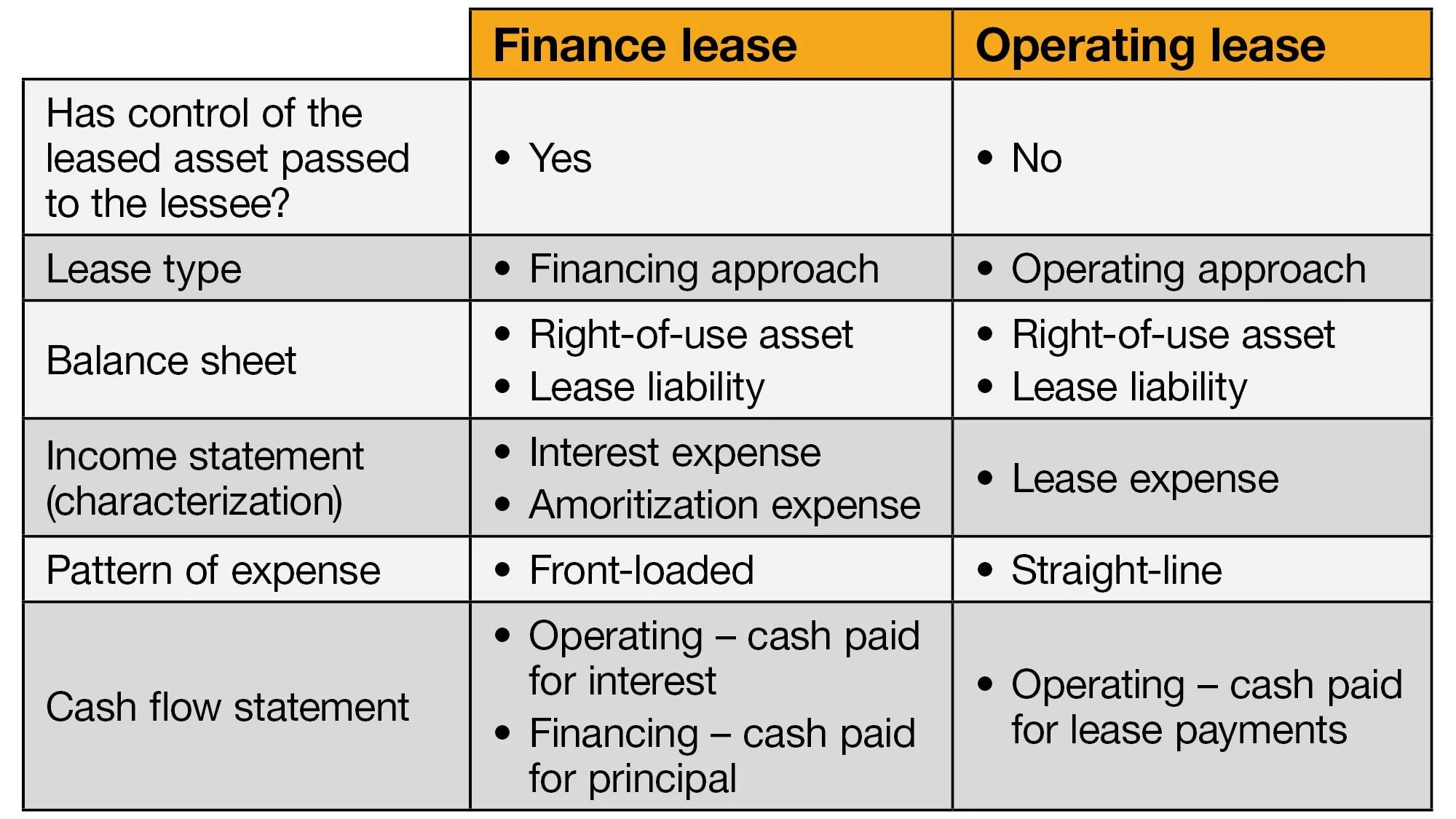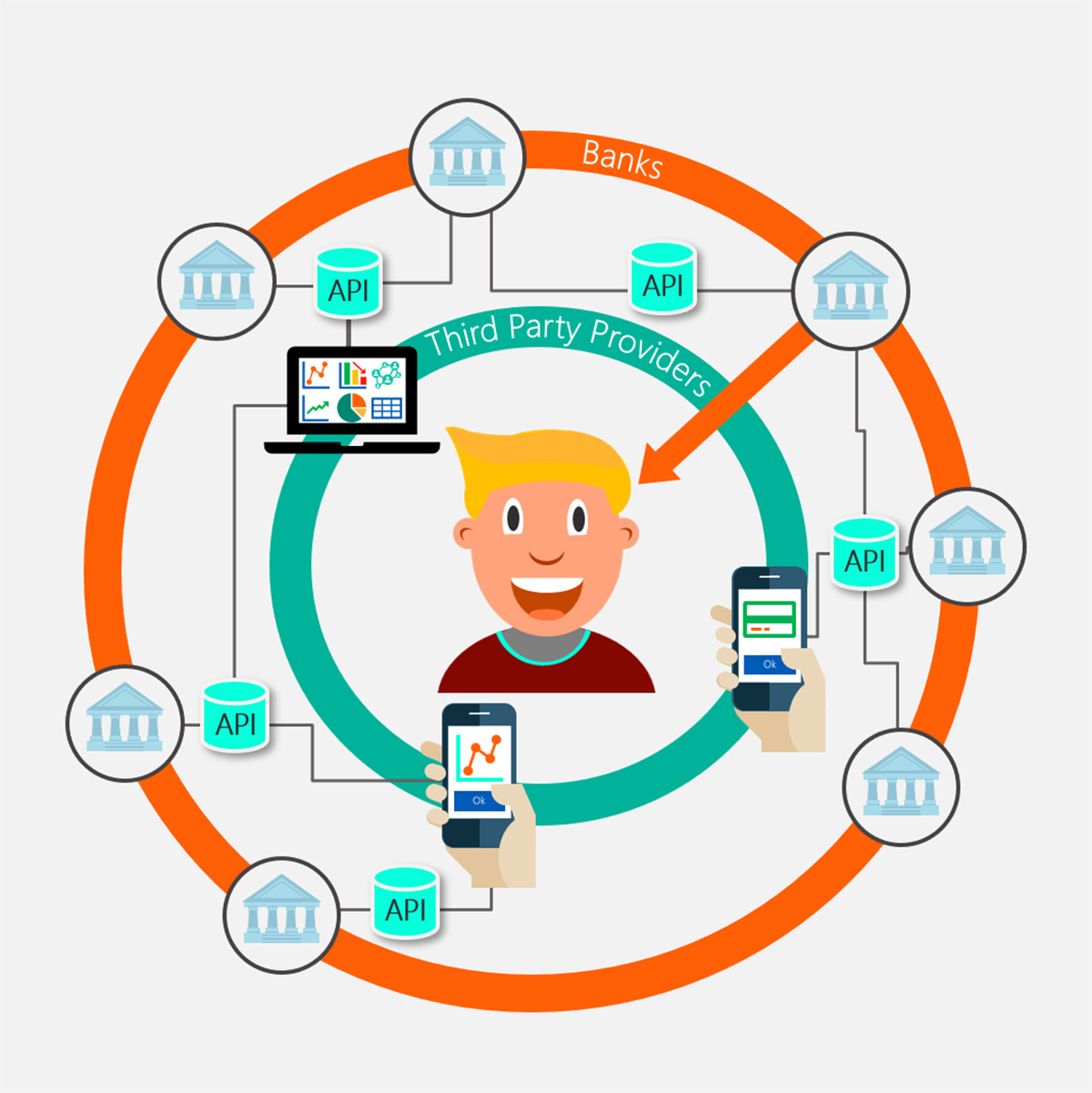

Finance
How To Avoid Credit Card Processing Fees
Published: November 4, 2023
Learn effective strategies and tips to minimize credit card processing fees to save money on your finance transactions.
(Many of the links in this article redirect to a specific reviewed product. Your purchase of these products through affiliate links helps to generate commission for LiveWell, at no extra cost. Learn more)
Table of Contents
- Introduction
- Understanding Credit Card Processing Fees
- Types of Credit Card Processing Fees
- Assessments Fees
- Interchange Fees
- Markup Fees
- Strategies to Avoid Credit Card Processing Fees
- Negotiating with Payment Processors
- Implementing Cash Discount Programs
- Setting Minimum Purchase Amounts
- Offering Alternative Payment Methods
- Conclusion
Introduction
When it comes to running a business, accepting credit card payments is a necessity. However, one aspect that can significantly impact your profitability is credit card processing fees. These fees, imposed by payment processors, can quickly add up and eat into your revenue.
Understanding how credit card processing fees work and implementing strategies to avoid them can make a significant difference to your bottom line. This article will provide you with insights into the different types of processing fees and share effective strategies to help minimize these fees.
As a business owner, it’s crucial to be aware of the specific fees you are being charged. This knowledge will empower you to make informed decisions and take proactive steps to manage your credit card processing expenses.
By the end of this article, you will have a clear understanding of the various processing fees, along with practical strategies to mitigate their impact, allowing you to optimize your business’s financial health.
Understanding Credit Card Processing Fees
Before diving into how to avoid credit card processing fees, it’s essential to have a basic understanding of how these fees are structured. Credit card processing fees are the charges levied by payment processors for facilitating electronic payments. These fees are typically a percentage of each transaction, along with a fixed per-transaction fee. The overall amount you pay in fees can vary depending on several factors, including your business type, transaction volume, and the payment processor you choose.
Payment processors play a critical role in the payment ecosystem by securely transferring funds from the customer’s credit card issuer to your merchant account. In exchange for their services, payment processors impose fees as a means of generating revenue. These fees are necessary for the payment infrastructure to function smoothly, but they can also eat into your profits if not managed effectively.
It’s important to note that credit card processing fees consist of different components, typically grouped into three main categories: assessments fees, interchange fees, and markup fees.
1. Assessments Fees: These fees are charged by the credit card networks, such as Visa, Mastercard, and American Express. The networks set the base fee rates and charge them to the payment processors. These fees cover the costs of maintaining and operating the network infrastructure. Assessments fees are typically a fixed percentage of each transaction.
2. Interchange Fees: Interchange fees are charges set by the card issuing banks and are part of the fees paid to them by the payment processors. These fees vary depending on the type of credit card, the risk associated with the transaction, and the industry in which your business operates. Interchange fees are determined by a complex set of criteria that are often subject to change by the card networks.
3. Markup Fees: The markup fees are the fees charged by the payment processor above and beyond the assessments and interchange fees. This is where payment processors make their profit. Markup fees can be negotiable, and they can vary significantly between providers. It’s crucial to understand the details of the markup fees and negotiate favorable terms with your payment processor.
By comprehending the structure of credit card processing fees, you can now delve into the strategies to minimize these fees, which will be discussed in the following sections.
Types of Credit Card Processing Fees
When it comes to credit card processing, there are several types of fees that businesses need to be aware of. Understanding these fees will help you identify areas where you can potentially save money. Here are the main types of credit card processing fees:
- Assessments Fees: These fees are charged by the credit card networks, such as Visa, Mastercard, and American Express. They are a fixed percentage of each transaction and cover the cost of maintaining and operating the network infrastructure. Assessments fees can vary between networks, and it’s important to review the fee structures of each network you accept cards from.
- Interchange Fees: Interchange fees are fees paid to the card-issuing bank for each transaction. These fees are set by the card networks and are based on several factors, including the type of card used, the risk associated with the transaction, and the industry in which your business operates. Interchange fees can make up a significant portion of your processing costs, so it’s important to understand how they apply to your business.
- Markup Fees: Markup fees are the fees charged by the payment processor above and beyond the assessments and interchange fees. This is where payment processors make their profit. Markup fees can vary depending on the provider and can be negotiable to some extent. It’s important to review the markup fees charged by different processors and negotiate favorable terms to minimize your costs.
- Monthly Fees: Some payment processors may charge a monthly fee for their services. This fee usually covers additional features and services offered by the processor, such as reporting tools, customer support, or fraud prevention. Make sure to evaluate the value of these additional services and compare it with the monthly fee to determine if it’s worth it for your business.
- Statement Fees: Statement fees are charged by the processor for providing monthly statements that outline your transaction history and fees. While these fees may seem small, they can add up over time. Consider opting for electronic statements or negotiating to have this fee waived to reduce your overall costs.
- Chargeback Fees: Chargebacks occur when a customer disputes a charge and requests a refund from their card issuer. Chargeback fees are typically charged by the payment processor to cover the administrative costs associated with resolving the dispute. Minimizing chargebacks through excellent customer service and clear refund policies can help reduce these fees.
Understanding the different types of credit card processing fees is essential for managing your costs effectively. By identifying where the majority of your fees are coming from, you can focus your efforts on strategies that will have the greatest impact on reducing your processing expenses.
Assessments Fees
Assessments fees are one of the types of fees charged in the credit card processing industry. These fees are imposed by the credit card networks, such as Visa, Mastercard, and American Express. The purpose of assessments fees is to cover the costs associated with operating and maintaining the network infrastructure that allows for electronic payments.
Assessments fees are typically calculated as a percentage of each transaction and can vary between card networks. The fee rates for assessments fees are predetermined by the networks and are subject to change periodically.
As a business owner, it’s essential to understand how assessments fees can impact your bottom line. While you have no control over the fee rates set by the networks, you can still take steps to manage and potentially lower your assessments fees.
One strategy to minimize assessments fees is to review and compare the fee structures of the different card networks. Each network may have its own fee rates and policies. By understanding the fee structures, you can choose to accept cards from networks with lower assessments fees or negotiate better rates with your payment processor.
Another way to mitigate assessments fees is to optimize your payment processing methods. Some networks may have special fee structures or programs that offer reduced rates if you meet certain criteria. For example, Visa offers a Small Ticket Interchange Program for businesses with lower average transaction sizes, and American Express has programs tailored for specific industries. Researching and leveraging these programs can help you reduce your assessments fees.
Regularly monitoring your assessments fees is also important. Keep track of your processing statements and review them for any unexpected fee increases or anomalies. If you notice any discrepancies or higher-than-usual fees, contact your payment processor to clarify and resolve the issue.
Lastly, consider working with a knowledgeable payment processing provider who can guide you through the assessments fee structures and help you navigate the complexities of the credit card processing industry. They can provide insights on fee optimization strategies and assist in negotiating favorable terms with the networks.
By understanding and actively managing assessments fees, you can effectively control and reduce this component of your credit card processing expenses. Taking steps to optimize your fee structures and staying vigilant in monitoring your fees can make a significant impact on your business’s profitability.
Interchange Fees
Interchange fees are an essential component of credit card processing fees. These fees are charged by the card-issuing banks and are paid to the payment processors for each transaction. Interchange fees are set by the credit card networks, such as Visa, Mastercard, and Discover, and are based on various factors, including the type of card used, the risk level associated with the transaction, and the industry in which your business operates.
The interchange fee structure is complex and can consist of different categories and rates. Different types of cards, such as rewards cards or corporate cards, typically have higher interchange rates compared to standard debit or credit cards. The risk level associated with a transaction, such as card-present transactions versus card-not-present transactions, can also affect the interchange fees.
As a merchant, it’s crucial to understand how interchange fees impact your business. These fees can significantly affect your profitability, especially if you process a large volume of credit card transactions.
To mitigate interchange fees, one strategy is to review your card acceptance policies. Understanding the types of cards that are most frequently used by your customers can help you optimize your payment acceptance methods. For example, if you notice that a significant portion of your customers use debit cards, encouraging debit card usage and offering incentives for customers to use these cards can result in lower interchange fees.
Another approach to reducing interchange fees is to ensure that you are properly categorizing your transactions. Some industries may have special interchange categories or rates that can offer lower fees. Working with a knowledgeable payment processor can help you navigate these categories and ensure that your transactions are categorized appropriately to access the most favorable interchange rates.
Negotiating with your payment processor is also a viable option to consider. Payment processors may have the ability to negotiate interchange rates depending on your transaction volume and business type. However, it’s important to note that interchange rates are set by the card networks, and the scope for negotiation may be limited.
Lastly, investing in technology and strategies that help reduce the risk of fraudulent transactions can also indirectly impact interchange fees. By implementing robust security measures, such as EMV chip card readers or tokenization, you can reduce the risk associated with transactions, potentially lowering your interchange fees.
Interchange fees are a significant component of credit card processing costs. By understanding the factors that influence these fees and implementing strategies to optimize them, you can effectively manage your interchange expenses and positively impact your overall profitability.
Markup Fees
In addition to assessments fees and interchange fees, markup fees are an important component of credit card processing costs. Markup fees are the fees charged by payment processors above and beyond the base fees set by the credit card networks. These fees are where payment processors make their profit.
Markup fees can vary significantly between payment processors and can be negotiable to some extent. It’s important to understand the details of markup fees and negotiate favorable terms to minimize your costs. Here are some key points to consider regarding markup fees:
1. Flat-rate vs. Interchange-Plus Pricing: Payment processors often offer different pricing models for their markup fees. Flat-rate pricing charges a single fixed fee for all transactions, while interchange-plus pricing breaks down the fees into separate components. Interchange-plus can provide more transparency as you can see the actual interchange fees being charged. Evaluate the pricing models offered by different processors and choose the one that best fits your business needs and transaction volume.
2. Negotiating Rates: Markup fees can be negotiable, especially if you have a high transaction volume or operate in a low-risk industry. Don’t hesitate to negotiate with payment processors to secure lower rates. Highlight your business strengths, such as a strong credit history or a long-standing customer base, to strengthen your bargaining position.
3. Bundled Services: Some payment processors may bundle additional services with their markup fees, such as fraud prevention tools, reporting capabilities, or customer support. Assess the value of these services and determine if they are worth the extra cost. Avoid paying for unnecessary features that won’t add significant value to your operations.
4. Transparent Pricing Statements: Ensure that your payment processor provides clear and transparent pricing statements that itemize the fees being charged. This will enable you to closely monitor and review your fees, ensuring there are no unexpected or hidden charges.
5. Regular Fee Analysis: Regularly analyze your processing statements and review your markup fees to identify any inconsistencies or unexpected increases. If you notice any discrepancies, reach out to your payment processor for clarification and resolution.
6. Consider Competitive Bidding: If you’re unhappy with your current processor’s markup fees, consider seeking quotes from other processors. Use this information to leverage competitive bidding and negotiate better rates with your existing processor or switch to a more cost-effective solution.
Remember, reducing markup fees can have a significant impact on your bottom line. Take the time to compare different payment processors, negotiate rates, and regularly review your fees to ensure you’re getting the best deal for your business.
Strategies to Avoid Credit Card Processing Fees
Credit card processing fees can eat into your business’s profits. However, there are several strategies you can implement to minimize and even avoid these fees. Here are some effective strategies to consider:
1. Negotiating with Payment Processors: When choosing a payment processor, don’t be afraid to negotiate the terms and conditions, including the processing fees. Payment processors often have flexibility in setting rates, especially for businesses with a high transaction volume or a strong credit history. By leveraging your bargaining power and comparing multiple providers, you can secure more favorable rates and lower your processing fees.
2. Implementing Cash Discount Programs: One way to avoid credit card processing fees altogether is by implementing a cash discount program. With this program, you offer a small discount to customers who pay with cash or alternative payment methods. By encouraging cash payments, you can reduce the number of credit card transactions, thereby reducing your processing fees.
3. Setting Minimum Purchase Amounts: Another strategy to minimize fees is by setting minimum purchase amounts for credit card transactions. This encourages customers to bundle smaller purchases together, reducing the number of individual transactions and thus lowering your processing fees. However, it’s essential to find a balance that doesn’t deter customers or violate any legal restrictions on minimum purchase amounts.
4. Offering Alternative Payment Methods: Expanding your payment options beyond credit cards can diversify your revenue streams and potentially lower your processing fees. Consider accepting alternative payment methods such as mobile wallets, digital payment platforms, or electronic bank transfers. By offering a variety of payment options, you provide flexibility to your customers while potentially reducing your reliance on credit card transactions.
5. Implementing Address Verification System (AVS): Fraudulent transactions can result in chargeback fees and financial losses. By implementing an AVS, which verifies the customer’s billing address against the one on file with the card issuer, you can minimize the risk of fraudulent transactions. This can help reduce chargeback fees and associated costs.
6. Educating Staff and Customers: Train your staff to be vigilant in identifying potential fraudulent activities and to follow best practices when handling credit card payments. Additionally, educate your customers about the costs involved in credit card transactions and encourage them to choose lower-cost payment options whenever possible. By raising awareness and providing guidance, you can collectively work towards reducing processing fees.
7. Utilizing Point-of-Sale (POS) Systems: Investing in modern POS systems can offer features such as real-time analytics and reporting, inventory management, and integrated payment platforms. These systems can help streamline your operations, reduce errors, and potentially lower your processing fees.
By implementing these strategies, you can effectively minimize and avoid credit card processing fees, allowing you to maximize your profits and optimize your business’s financial health.
Negotiating with Payment Processors
When it comes to credit card processing fees, one effective strategy to consider is negotiating with payment processors. While payment processors typically have set fee structures, they often have some flexibility when it comes to rates, especially for businesses with a high transaction volume or a strong credit history. Here are some tips for negotiating with payment processors:
1. Research and Compare: Before starting negotiations, research and compare different payment processors. Look for providers that have a good reputation, transparent pricing, and positive customer reviews. By identifying potential alternatives, you position yourself to negotiate from a position of strength.
2. Understand the Fee Structure: Gain a thorough understanding of the various fees charged by the processor, including assessments, interchange, and markup fees. This knowledge will enable you to ask specific questions and negotiate intelligently. Ask for a breakdown of the fees and ensure they are clearly explained to you.
3. Analyze Your Current Processing Statements: Review your past processing statements to identify any trends or patterns in your transaction volume or average ticket size. This information will provide you with valuable data to assess your bargaining power and negotiate better rates.
4. Highlight Your Business Strengths: During negotiations, emphasize your business’s strengths and positive attributes that can be of value to the payment processor. For example, if you have a low chargeback ratio or a stable customer base, emphasize these factors to demonstrate your reliability as a merchant.
5. Demonstrate Your Value as a Customer: If you have a high transaction volume or anticipate substantial growth, make this known to the payment processor. Highlight the potential long-term value of your business and emphasize that you are seeking a reliable and beneficial partnership.
6. Seek Multiple Quotes: Don’t hesitate to reach out to multiple payment processors and request quotes. Use these quotes as leverage in negotiations to secure the best possible rates and fees. Payment processors may be more willing to negotiate if they know there is competition for your business.
7. Consider Non-Price Factors: While negotiating, don’t solely focus on rates and fees. Also, consider factors such as customer support, reliability, and the range of services offered. Ensure that the payment processor can meet your specific business needs in addition to offering competitive pricing.
8. Negotiate Contract Terms: In addition to rates and fees, negotiate the terms of your contract with the payment processor. Pay attention to contract length, early termination fees, and any potential hidden costs. Request favorable terms that align with your business objectives.
Remember that negotiation is a two-way process, and both parties should be willing to find a mutually beneficial solution. By approaching payment processors with a clear understanding of your business needs and leveraging your strengths, you increase your chances of securing more favorable rates and terms for credit card processing services.
Implementing Cash Discount Programs
One effective strategy to minimize credit card processing fees is to implement a cash discount program. With this approach, you offer a small discount to customers who pay with cash or alternative payment methods, while charging the regular price for those who choose to pay with a credit card. By encouraging cash payments, you can reduce the number of credit card transactions and potentially eliminate processing fees altogether. Here’s how to implement a cash discount program:
1. Understand Legal Considerations: Before implementing a cash discount program, it’s important to familiarize yourself with local laws and regulations. Some jurisdictions have specific rules regarding surcharges or discounts for cash payments, so ensure that you are compliant with any applicable regulations.
2. Determine the Discount Amount: Decide on the discount amount you are willing to offer for cash payments. Typically, this can range from 1% to 4% of the transaction total. Consider factors such as your average transaction size, profit margins, and the potential impact on your overall revenue when setting the discount amount.
3. Communicate the Program Clearly: Clearly communicate the cash discount program to your customers through signage at your point of sale (POS) or on your website. Explain the discount amount and the reason for implementing the program, such as reducing processing fees. Transparency is crucial to ensure customers understand the program and feel comfortable participating.
4. Train Staff Appropriately: Educate your staff about the cash discount program and its benefits. Ensure they understand how to apply the discount accurately and answer any questions customers may have. Consistent implementation and excellent customer service will help facilitate a smooth transition and maximize the program’s effectiveness.
5. Consider Alternative Payment Options: Alongside cash payments, explore accepting alternative payment methods such as digital wallets, mobile payment apps, or electronic bank transfers. These methods can offer convenience to customers who prefer cashless options while still qualifying for the regular price without incurring processing fees.
6. Monitor Program Effectiveness: Regularly evaluate the impact of the cash discount program on your business. Analyze the number of cash transactions versus credit card transactions to assess the reduction in processing fees. Additionally, monitor customer feedback and adjust the program if necessary to ensure it continues to meet your business objectives.
7. Keep Compliance in Mind: Ensure that your cash discount program complies with card network rules and regulations. Make it clear that the difference in price relates to the payment method and not the card brand. Maintain transparency to avoid any potential conflicts with payment networks or card schemes.
Implementing a cash discount program can provide a practical solution for reducing credit card processing fees. It encourages cash transactions while still accommodating customers who prefer credit card payments. By effectively communicating the program and monitoring its impact, you can successfully control costs and optimize your business’s financial health.
Setting Minimum Purchase Amounts
Setting a minimum purchase amount for credit card transactions is a strategy that businesses can employ to help reduce credit card processing fees. By implementing a minimum purchase requirement, you can encourage customers to bundle smaller purchases together, thus reducing the number of individual credit card transactions. Here’s how to effectively set minimum purchase amounts:
1. Evaluate Your Transaction Patterns: Analyze your transaction data to understand the average ticket size and frequency of small transactions. This information will help you determine an appropriate minimum purchase amount that strikes a balance between reducing fees and not imposing too significant a burden on customers.
2. Consider Customer Expectations: Take into account your customer base and their expectations. Setting a higher minimum purchase amount may deter some customers, while setting it too low may not yield the desired impact on reducing fees. Research industry standards and customer preferences to guide your decision-making process.
3. Communicate the Minimum Purchase Amount: Clearly communicate the minimum purchase amount to your customers. Display signage at the point of sale and include the information on your website, menus, or promotional materials. This ensures that customers are aware of the policy upfront and can plan their purchases accordingly.
4. Train Staff to Enforce the Policy: Educate your staff on the minimum purchase amount policy and provide guidance on how to handle situations where customers do not meet the requirement. Train them to communicate the policy politely and offer alternative payment options if available.
5. Flexibility for Regular Customers: Consider making exceptions or providing flexibility for your loyal or regular customers. Building goodwill and maintaining strong customer relationships may outweigh the potential fees incurred from smaller transactions. Exercise discretion and evaluate each situation on a case-by-case basis.
6. Regularly Evaluate and Adjust: Monitor the impact of the minimum purchase amount policy on your credit card transaction volume and fees. Regularly review sales data to assess the effectiveness of the strategy. If necessary, make adjustments to the minimum purchase amount to ensure it aligns with your business goals and customer expectations.
7. Local Regulations and Card Network Rules: Keep in mind that some jurisdictions or card networks may have restrictions on minimum purchase amounts. Ensure that your policy complies with local laws and card network rules to avoid any legal or contractual issues.
Implementing a minimum purchase amount policy for credit card transactions can help reduce processing fees by encouraging customers to consolidate their purchases into larger transactions. By carefully considering your customer base, communicating the policy effectively, and regularly monitoring its impact, you can optimize your credit card processing and improve your business’s financial viability.
Offering Alternative Payment Methods
In addition to credit card payments, offering alternative payment methods can diversify your revenue streams and potentially lower your credit card processing fees. By providing customers with a variety of payment options, you cater to their preferences and reduce reliance on credit card transactions. Here are some considerations for offering alternative payment methods:
1. Mobile Wallets and Payment Apps: Embrace the rise of mobile wallet technologies, such as Apple Pay, Google Pay, or Samsung Pay. These digital payment solutions allow customers to make purchases using their smartphones, providing convenience and security. Integrating mobile wallet options into your payment systems can help attract tech-savvy customers and reduce credit card transaction fees.
2. Digital Payment Platforms: Consider using online payment platforms like PayPal, Stripe, or Square. These platforms provide secure and convenient payment options for online, in-store, and mobile transactions. They often offer competitive fees and allow customers to pay using various methods, including credit cards, debit cards, and bank transfers.
3. Electronic Bank Transfers: Enable customers to make payments directly from their bank accounts. This can be done through Automated Clearing House (ACH) transfers or online banking systems. Electronic bank transfers typically have lower transaction fees compared to credit card transactions, making them a cost-effective alternative for both businesses and customers.
4. Digital Invoicing: For businesses that bill clients or send invoices, offering digital invoicing with payment options can simplify the payment process and expand payment choices. With digital invoicing, customers can pay using credit cards, bank transfers, or other available payment methods, reducing the reliance on traditional card transactions.
5. Gift Cards and Store Credit: Implement a gift card or store credit system that allows customers to load funds onto a card for future purchases. By promoting and encouraging the use of gift cards, you can decrease credit card transactions and potentially boost customer loyalty. Gift cards and store credit also bring in revenue upfront, reducing the need for immediate credit card payments.
6. Cryptocurrency: For businesses comfortable with digital currencies, accepting cryptocurrencies like Bitcoin or Ethereum can be an innovative way to offer alternative payment methods. Cryptocurrency transactions can provide lower fees compared to traditional credit card processing, especially for international transactions.
7. Evaluate Customer Preferences: Survey your customer base to understand their preferred payment methods and adapt accordingly. Analyze transaction data to identify payment trends and customer behavior. This information will guide you in selecting the most relevant alternative payment methods to offer.
By diversifying your payment options and offering alternative methods, you reduce your dependence on credit card transactions and potentially lower associated processing fees. Consider the preferences of your customers, the nature of your business, and industry trends when implementing alternative payment methods. Stay aware of emerging payment technologies and regularly evaluate the effectiveness of the options you provide to optimize your payment processing strategy.
Conclusion
Credit card processing fees are an unavoidable aspect of running a business, but there are effective strategies to minimize and avoid these fees. Understanding the different types of fees, such as assessments fees, interchange fees, and markup fees, is the first step towards managing your credit card processing costs.
By negotiating with payment processors, you can secure more favorable rates and terms that align with your business needs. Researching providers, understanding fee structures, and highlighting your strengths as a customer can help in the negotiation process.
Implementing cash discount programs and setting minimum purchase amounts can encourage cash payments and reduce the number of credit card transactions, subsequently lowering processing fees. Offering alternative payment methods, such as mobile wallets, digital payment platforms, and electronic bank transfers, diversifies your payment options and can help mitigate reliance on credit cards.
Regularly monitoring and analyzing your credit card processing statements, as well as staying informed about regulations and market trends, will allow you to make informed decisions and optimize your payment processing strategy.
In conclusion, by understanding the intricacies of credit card processing fees and implementing proactive strategies, you can effectively manage and reduce these fees, ultimately improving your business’s financial health. Explore different approaches, negotiate with payment processors, and offer diverse payment methods to minimize costs and enhance your overall profitability.














